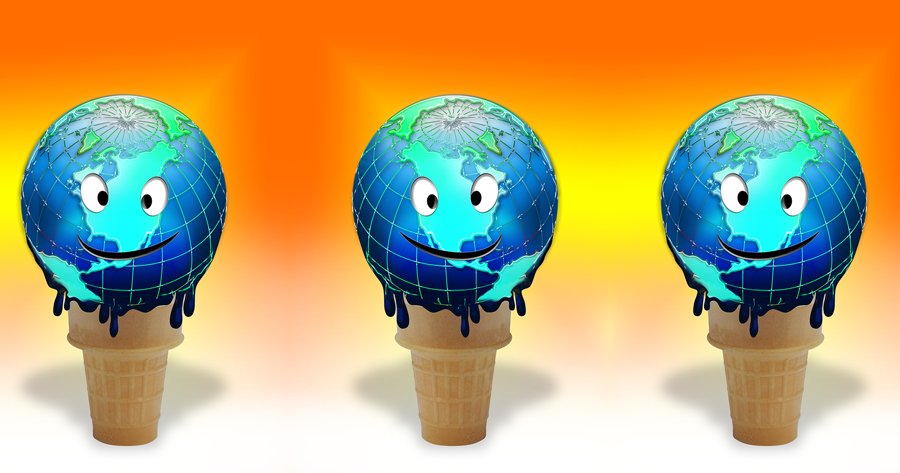The United States is well known as an international leader in eating sugary, non-nutritious diets and for all the health problems they create. But people who live in other nations may not be too far behind in developing similarly poor eating habits. According to new research, consuming sugar-laden foods has become increasingly common all across the globe.
The study, which was conducted as a joint venture between the University of North Carolina, Chapel Hill and City University London in the United Kingdom, found that citizens of countries around the world are eating and drinking more sugar-sweetened foods and beverages than ever before, thereby increasing their risk of conditions including diabetes, cardiovascular disease, and stroke.1 Popkin, Barry M. and Hawkes, Corinna. “Sweetening of the global diet, particularly beverages: patterns, trends, and policy responses.” The Lancet Diabetes & Endocrinology. 1 December 2015. Accessed 9 December 2015. http://www.thelancet.com/journals/landia/article/PIIS2213-8587(15)00419-2/abstract The scientists examined data on the food supply in nations everywhere to measure sugar consumption levels in various regions.
Their analysis determined that consumption of sugar is increasing most quickly in a number of low- and middle-income countries throughout Africa, the Middle East, Asia, Oceania, Latin America, and the Caribbean. Presently, the four areas that have the highest consumption levels of sugary beverages are North America, Latin America, Australasia, and Western Europe. On a positive note, however, those numbers are beginning to drop slightly in Western Europe, North America, and Australasia.
The changes taking place in lower and middle-income nations are likely due to several factors. Whereas once the only shopping option was the neighborhood market with fresh local foods, larger supermarkets have become more widespread in less affluent parts of the world. They bring with them packaged convenience foods that often become dietary staples for many people. But these frozen, boxed, and canned foods are typically full of preservatives; high in calories, fat, and sugar; and offer little nutritional value.
Another problem is the globalization of corporate marketing campaigns that promote sugar-laden beverages in these developing areas of the world. Many low- and middle-income countries have seen huge jumps in the sales of sugary drinks over the past 20 years or so. And they have become available not only in the large supermarkets that have sprung up, but also in smaller stores and restaurants in little villages as well as in larger cities.
The scientists turned their focus to the United States too, in order to examine sugar within the food supply. They discovered that 68 percent of packaged food and drinks in the US contain caloric sweeteners, 74 percent have a combination of caloric and low-calorie sweeteners, and five percent contain only low-calorie sweeteners. That is certainly not to say that we should be switching out our sugary foods and drinks for those full of artificial chemicals, though. Not only has the popular sweetener aspartame been linked with several types of cancers and sucralose been linked to dramatic shrinkage of the thymus gland,2 1A Scientific Committee On Food “Opinion of the Scientific Committee on Food on sucralose” European Commission Health & Consumer Protection Directorate-General. 12/9/2000. (Accessed 10 Dec 2015.) http://ec.europa.eu/food/fs/sc/scf/out68_en.pdf but a 2008 study at Purdue University in West Lafayette, Indiana found that artificial sweeteners of all kinds may cause weight gain by throwing off your body’s natural calorie-counting response, leaving you more likely to overindulge in food.3 Swithers, Susan E. and Davidson, Terry L. “A Role for Sweet Taste: Calorie Predictive Relations in Energy Regulation by Rats.” Behavioral Neuroscience. February 2008. Accessed 10 December 2015. http://www.apa.org/pubs/journals/releases/bne-122-1-161.pdf
Instead of turning to artificial sweeteners, the answer lies in cutting back on our intake of sugary items, whether in the form of packaged baked goods, sodas and sports drinks, desserts, or even many kinds of sauces. Diets high in sugar have been linked to obesity, diabetes, heart disease, and cancer. While the researchers of the current study suggest that consumption can be curbed through imposing greater taxes on foods and drinks with added sugar, package labeling requirements that would emphasize sugar content, regulating the marketing of these products, and restricting their sales in schools, the fact is that none of us–no matter where we live–can depend on our government to enact these types of laws.
Instead, we must increase our own knowledge about the dangers of a diet with a high sugar intake. We need to read labels and learn which foods and beverages are loaded with sugar and avoid purchasing them. Choose fresh foods, naturally sweet items like fruits for dessert, and stick with water or unsweetened tea to drink. It may not be easy to give your diet an overhaul, but you will develop good long-term eating habits. Plus, the difference in how your body feels after cutting back on sugar will provide further motivation to stick with your changes.
References
| ↑1 | Popkin, Barry M. and Hawkes, Corinna. “Sweetening of the global diet, particularly beverages: patterns, trends, and policy responses.” The Lancet Diabetes & Endocrinology. 1 December 2015. Accessed 9 December 2015. http://www.thelancet.com/journals/landia/article/PIIS2213-8587(15)00419-2/abstract |
|---|---|
| ↑2 | 1A Scientific Committee On Food “Opinion of the Scientific Committee on Food on sucralose” European Commission Health & Consumer Protection Directorate-General. 12/9/2000. (Accessed 10 Dec 2015.) http://ec.europa.eu/food/fs/sc/scf/out68_en.pdf |
| ↑3 | Swithers, Susan E. and Davidson, Terry L. “A Role for Sweet Taste: Calorie Predictive Relations in Energy Regulation by Rats.” Behavioral Neuroscience. February 2008. Accessed 10 December 2015. http://www.apa.org/pubs/journals/releases/bne-122-1-161.pdf |











